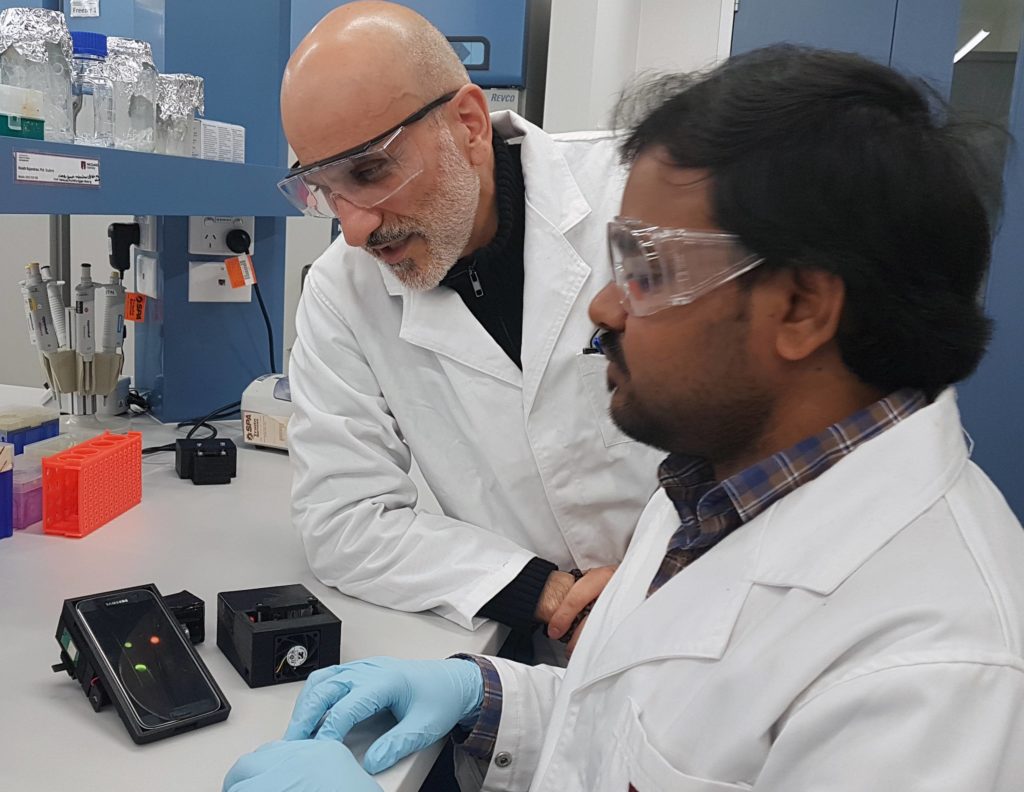Investigating solar panels, joint lubricants, COVID-19 and much more.
A neutron beam instrument, gifted to Australia by German materials research agency HZB, is now operating at the ANSTO nuclear reactor in Sydney.
Continue reading The neutron zoneA neutron beam instrument, gifted to Australia by German materials research agency HZB, is now operating at the ANSTO nuclear reactor in Sydney.
Continue reading The neutron zoneImage credit: Pixabay

Whooping cough strains are adapting to better infect humans, a team of Sydney researchers has found.
The scientists, led by microbiologist Dr Laurence Luu of the University of New South Wales, may have solved the mystery of why, despite widespread vaccinations, the respiratory disease has been resurgent in Australia across the past decade. There have been more than 200,000 cases recorded during the period.
Continue reading Whooping cough is fighting back.
A combination of off-the-shelf quantum dot nanotechnology and a smartphone camera soon could allow doctors to identify antibiotic-resistant bacteria in just 40 minutes, potentially saving patient lives.
Staphylococcus aureus (golden staph), is a common form of bacterium that causes serious and sometimes fatal conditions such as pneumonia and heart valve infections. Of particular concern is a strain that does not respond to methicillin, the antibiotic of first resort, and is known as methicillin-resistant S. aureus, or MRSA.
Recent reports estimate that 700 000 deaths globally could be attributed to antimicrobial resistance, such as methicillin-resistance. Rapid identification of MRSA is essential for effective treatment, but current methods make it a challenging process, even within well-equipped hospitals.
Continue reading Using quantum dots and a smartphone to find killer bacteriaDr Stuart Ryder is venturing into the stratosphere on a NASA jet to study the birthplace of massive stars.
Macquarie University astronomer Dr Stuart Ryder is in New Zealand to hitch a ride on a NASA jet and take a closer look at how stars are born in one of the most active stellar nurseries ever seen.
“We’re looking at a molecular cloud called BYF73, which is collapsing in on itself at extremely high speeds and forming massive stars,” says Stuart, who is an Adjunct Fellow with the Department of Physics and Astronomy at Macquarie University.
Continue reading Astronomer flies high to spy on star formationIn May 2017, the European Union led a mission called QB50 to launch a constellation of 50 mini-satellites from the International Space Station. The pocket-sized CubeSats set out to study the thermosphere, the layer of Earth’s atmosphere between 90 and 600 kilometres above the ground that carries signals from GPS and other satellites.
Continue reading 50 CubeSats to explore the thermosphereClimate change will bring hotter weather and rising seas, but what it means for natural disasters such as floods and fires is less clear.
Part of the difficulty is that such catastrophes are often “compound events” in which multiple factors combine to wreak havoc.
Continue reading Compound interestThough Cyprus is blessed with plentiful sunshine, rainfall is low and the country depends on energy-intensive desalination plants for its drinking water. Continue reading Australian mirrors helping to power Cyprus
New Guinea is one of the only places in the world where frogs are safe from the species-destroying chytrid fungus. An international team of scientists has published a new paper that shows how to keep it that way, but they need help to carry out their plan.
The chytrid fungus has wiped out more than 90 frog species around the world, and it’s driving hundreds more towards extinction. New Guinea – the world’s largest tropical island, and home to 6% of all known frog species – is one of the last remaining refuges from the deadly infection.
A team of scientists led by researchers from Macquarie University and the University of New England in Australia think they know how to keep the island’s frogs safe, but they need support to establish a long-term program of monitoring and conservation.
Continue reading A safe haven for frogs in a sea of extinctionsMost diamonds are made of cooked seabed.
The diamond on your finger is most likely made of recycled seabed cooked deep in the Earth.
Traces of salt trapped in many diamonds show the stones are formed from ancient seabeds that became buried deep beneath the Earth’s crust, according to new research led by Macquarie University geoscientists.
Most diamonds found at the Earth’s surface are formed this way; others are created by crystallization of melts deep in the mantle.
In experiments recreating the extreme pressures and temperatures found 200 kilometres underground, Dr Michael Förster, Professor Stephen Foley, Dr Olivier Alard, and colleagues at Goethe Universität and Johannes Gutenberg Universität in Germany, have demonstrated that seawater in sediment from the bottom of the ocean reacts in the right way to produce the balance of salts found in diamond.
The study, published in Science Advances, settles a long-standing question about the formation of diamonds. “There was a theory that the salts trapped inside diamonds came from marine seawater, but couldn’t be tested,” says lead author Michael. “Our research showed that they came from marine sediment.”
Continue reading Earth recycles ocean floor into diamondsLocation matters for species struggling to survive under a changing climate.
A new study led by Macquarie University has found we need to provide more safe havens for wildlife and plant species to survive under climate change in New South Wales’ west.
Along the Great Dividing Range, the vulnerable spotted-tailed quoll will be forced to move into higher habitats as the climate changes, but can find sanctuary in protected areas like Kosciuszko National Park.
The squirrel glider, also listed as a vulnerable species, will have more suitable places to live under climate change. However, few of its potential new homes in central western New South Wales are adequately protected.
Continue reading More safe havens for native plants and animals needed in NSW’s west